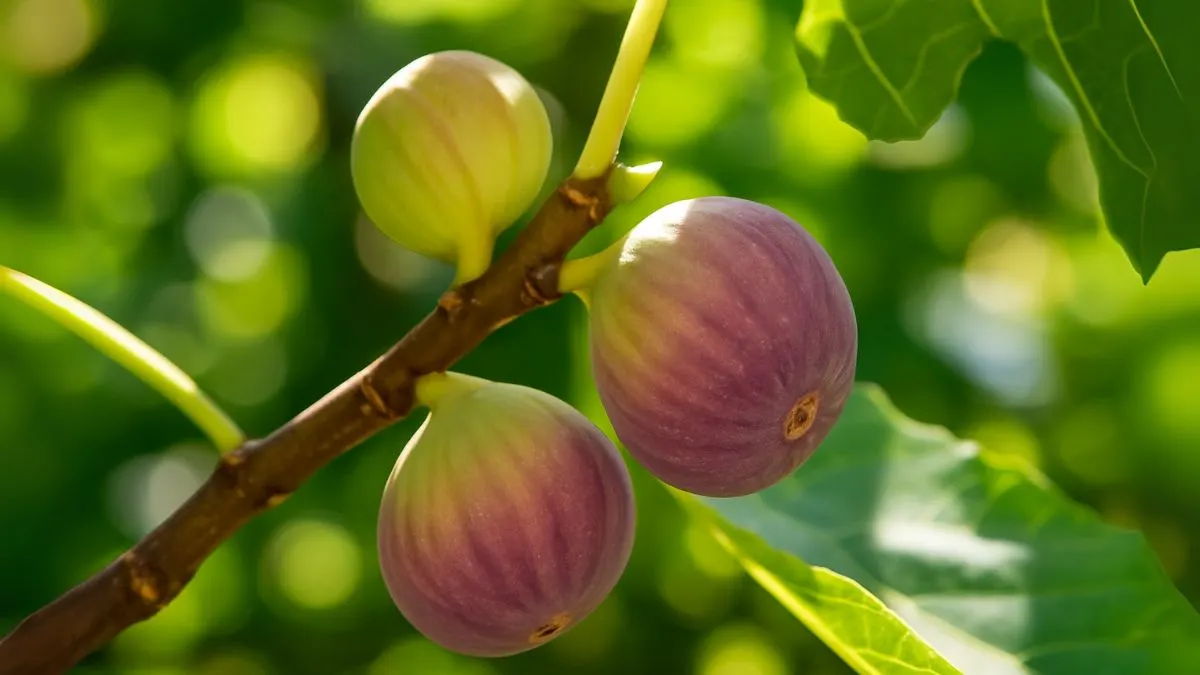The sweet fig plant, known as Anjeer in many parts of the world, is one of the oldest cultivated fruit trees. Loved for its juicy fruits and medicinal properties, figs are popular in countries like the USA, Canada, India, and across the Mediterranean. The best part? You don’t need a massive orchard to grow them. With a bit of preparation, you can cultivate a fig plant right in your home garden or container.
If you’re wondering where to begin, the first step is to take anjeer tree seeds and soak them for one day in lukewarm water. This simple trick improves germination and gives your fig journey a healthy start.
1. Why Grow Figs at Home?

Figs are more than delicious; they’re nutrition-packed. Rich in fiber, calcium, and antioxidants, they help improve digestion, bone strength, and overall immunity. Growing figs at home ensures you get pesticide-free, organic fruits while also adding greenery to your space.
I still remember planting my first fig in a large container on my terrace. Within a year, it rewarded me with sweet, soft fruits that tasted far better than store-bought ones.
2. Preparing Fig Seeds for Planting
The journey begins with seeds.
- Always soak anjeer tree seeds in lukewarm water for one day to soften the outer coat.
- This step ensures better germination by allowing moisture to penetrate the seeds.
- Once soaked, dry the seeds lightly on a clean cloth before planting.
Some gardeners also prefer to start with cuttings, but growing from seed gives you the joy of nurturing the plant right from the beginning.
3. Soil Requirements
Figs are not too fussy, but they do prefer fertile, well-drained soil.
- Soil pH: 6.0 to 7.5.
- Add compost or organic matter before planting.
- Sandy loam soil works best, but figs also tolerate clay if drainage is good.
If you live in a colder country like Canada, grow figs in large pots with premium potting soil so you can move them indoors during harsh winters.
4. Planting Figs
Here’s a step-by-step method:
- Select a sunny location with at least 6–8 hours of direct sunlight.
- Plant seeds about 1/2 inch deep in soil.
- Water lightly but regularly to keep the soil moist.
- Space trees at least 10–15 feet apart if planting outdoors in gardens.
For container planting, choose pots at least 15–20 inches wide to give roots enough room to spread.
5. Watering Needs
Figs thrive on consistent moisture.
- Water deeply once or twice a week, depending on weather.
- Avoid waterlogging, which may cause root rot.
- Mulch around the base to retain soil moisture and regulate temperature.
6. Sunlight Requirements
Figs love warmth.
- Provide full sun for best fruiting.
- In very hot climates, partial shade during peak afternoon hours helps prevent leaf scorch.
- If growing indoors, place the container near a sunny window or under grow lights.
7. Fertilizing the Fig Plant
To boost growth:
- Apply balanced organic fertilizer (like 10-10-10) every month during the growing season.
- Compost tea or liquid seaweed can also improve soil nutrition.
- Avoid overfertilizing, as it may encourage leaf growth instead of fruits.
8. Common Pests and Diseases
While figs are hardy, they can face challenges:
- Aphids and scale insects – controlled by neem oil sprays.
- Fungal infections – prevented by good air circulation and avoiding overwatering.
- Root rot – avoid poorly drained soil.
Keeping the plant clean and regularly checking leaves helps prevent these problems.
9. Harvesting Sweet Figs
Figs are ready when they change color, soften, and droop slightly on the branch. Unlike many fruits, figs do not ripen after harvest.
- Pick when fully ripe.
- Handle gently to avoid bruising.
- Store fresh figs in the refrigerator for up to 5 days, or dry them for longer use.
Quick Care Guide for Fig Plants
Requirement |
Details |
Seed Prep |
Take anjeer tree seeds and soak them for one day in lukewarm water |
Sunlight |
6–8 hours of direct sun daily |
Soil |
Fertile, well-drained, sandy loam (pH 6.0–7.5) |
Watering |
Deep watering weekly; keep soil moist, not soggy |
Spacing |
10–15 ft apart outdoors; 15–20 inch pots indoors |
Fertilizer |
Balanced fertilizer monthly during growing season |
Harvesting |
When fruits soften, droop, and change color |
Global Popularity of Figs
The sweet fig plant (Anjeer) is famous across the world:
- In the USA and Canada, figs are grown in home gardens and greenhouses.
- In the Mediterranean region, figs are a cultural and culinary staple.
- In India, anjeer is often consumed dried, added to sweets, and cherished for its health benefits.
Growing figs at home is easier than you think. With a little patience, you’ll enjoy one of the oldest and most nutritious fruits right from your backyard or balcony.
Whether you’re in Canada, the USA, or anywhere else, figs can thrive with proper care and love. Try planting them this season—you’ll be amazed at the results!






